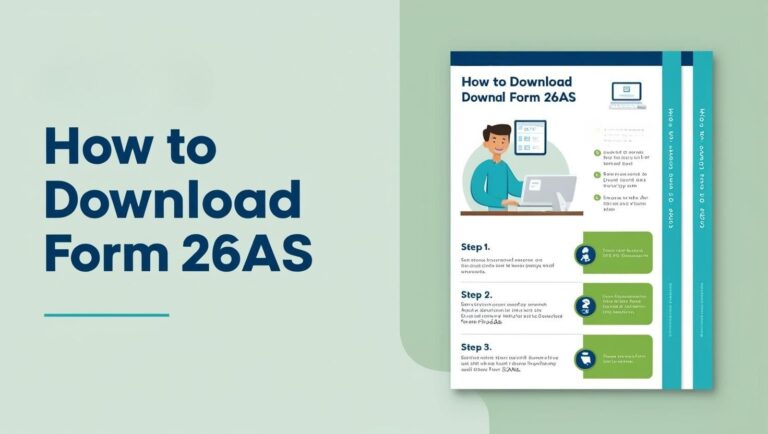Maximize Your Savings with Tax Saving Schemes Beyond 80C
Introduction
As professionals navigate their career paths, tax-saving strategies become crucial to securing financial well-being. With an ever-growing financial responsibility, many workers look for effective ways to minimize their taxable income and maximize their savings. One of the most common methods people are familiar with is Section 80C of the Income Tax Act, 1961, which offers tax-saving benefits of up to ₹1.5 lakh annually. However, this cap may not always be sufficient, and that’s where tax saving schemes other than 80C come into play.
This blog will guide you through various tax-saving options other than 80C that can help reduce your taxable income further. We’ll simplify lesser-known provisions, such as deductions under Sections 80E, 80TTA, 80CCD(1B), and others, to help you make the most of your financial situation.
Why Look Beyond 80C?
While Section 80C is widely used for tax saving, its ₹1.5 lakh limit can restrict savings for individuals with high financial commitments, such as home loans, education loans, or retirement planning. Relying solely on 80C could mean leaving valuable tax-saving opportunities untapped.
By exploring other tax saving options beyond 80C, you can further reduce your taxable income, thereby lowering the overall tax liability. This approach helps individuals save taxes more effectively and tailor their tax-saving strategies to fit their unique financial goals.
Tax Saving Options Beyond 80C
a. Education Loans – Section 80E
If you’re paying off an education loan, you can claim deductions under Section 80E of the Income Tax Act. This section allows a tax deduction on the interest paid on education loans, making it an excellent option for professionals pursuing higher education or parents supporting their children’s studies.
The best part? The deduction under Section 80E is available for up to 8 years or until the loan is repaid. So, if you’re actively paying off an education loan, you can significantly reduce your taxable income while investing in personal or family growth.
b. Home Loan Interest – Section 24
Section 24 offers tax-saving benefits on the interest paid for home loans. Under this provision, you can claim a deduction of up to ₹2 lakh annually on home loan interest. This is especially beneficial for young professionals investing in property.
Additionally, if you’re paying both home loan interest and principal, you can combine this deduction with benefits from Section 80C for the principal repayment, providing a powerful way to reduce your taxable income.
c. NPS Contributions – Section 80CCD(1B)
The National Pension System (NPS) provides another excellent opportunity for tax saving. Contributions made to NPS are eligible for an additional deduction of ₹50,000 under Section 80CCD(1B). This is over and above the ₹1.5 lakh limit under Section 80C, making it one of the best tax-saving investment options other than 80C.
Not only does NPS help reduce your taxable income, but it also acts as a great long-term retirement planning tool, ensuring financial security post-retirement.
d. Interest Earned on Savings Accounts – Section 80TTA
Section 80TTA allows individuals to claim deductions on the interest earned from savings bank accounts. The deduction is capped at ₹10,000 per year and applies primarily to non-senior citizens with moderate savings. While the limit may seem small, it can still be useful for those with several savings accounts or smaller balances.
e. Senior Citizens’ Benefits – Section 80TTB
For senior citizens, Section 80TTB offers a more significant tax-saving benefit. This provision allows up to ₹50,000 in deductions on interest income, covering savings accounts, fixed deposits, and other forms of interest-bearing income. This is an ideal option for elderly individuals who may rely on interest income as a primary source of funds.
f. Donations to Political Parties or Electoral Trusts – Section 80GGC
If you are inclined to contribute to a political cause or support democratic institutions, Section 80GGC offers tax deductions for donations made to political parties or electoral trusts. While the benefits are not as widely known, this provision allows you to reduce taxable income while making a meaningful contribution to the democratic process.
How to Choose the Right Schemes
When evaluating tax saving schemes other than 80C, it’s essential to align them with your specific financial goals. Here’s a checklist to guide your decision:
- Evaluate Financial Goals: Are you saving for retirement, higher education, or a home? Choose tax-saving options that complement your goals.
- Consider Income Slabs: High-income earners may benefit from a more aggressive tax-saving strategy, while moderate-income earners might look for smaller deductions.
- Factor in Life Stages: A young professional may prioritize NPS contributions, while a senior citizen may focus on interest deductions under Section 80TTB.
Common Mistakes to Avoid
To make the most of tax-saving opportunities, avoid these common mistakes:
- Neglecting Documentation: Always keep records of your tax-saving investments and deductions. Failing to do so may prevent you from claiming the full benefits.
- Missing Savings Bank Interest Deductions: Many individuals forget to claim deductions under Section 80TTA, which could mean missing out on easy tax savings.
- Overlooking Deadlines: Ensure that all investments are made before the tax year ends to qualify for deductions.
Bringing It All Together
Maximizing your savings requires a strategy that integrates Section 80C benefits with additional tax-saving schemes. Consider using a tax calculator or consulting a tax expert to ensure you’re leveraging all available deductions to your advantage.
By developing a personalized tax plan, you can optimize your tax-saving efforts, increase your disposable income, and improve your long-term financial health.
Conclusion
Thinking beyond Section 80C can significantly impact your tax liability and savings potential. With options like education loan deductions, home loan interest benefits, and NPS contributions, you have various ways to reduce taxable income and plan for the future.
Take actionable steps today—review your eligibility for these deductions, start NPS contributions, or calculate interest-related claims. For more personalized advice, consult a financial expert or explore government tax-related resources.
By leveraging tax-saving schemes other than 80C, you can make smarter financial decisions and secure a more financially stable future.
Learn more about the tax system in our The Indian Tax System: What You Need to Know.
FAQs: Tax Saving Schemes Beyond 80C
1. What are tax saving schemes other than 80C?
Tax saving schemes other than 80C are provisions under the Income Tax Act, 1961, that allow individuals to claim deductions on various expenses and investments, reducing their taxable income. These include options like education loan interest (Section 80E), home loan interest (Section 24), NPS contributions (Section 80CCD(1B)), and more.
2. How can I save taxes beyond the ₹1.5 lakh limit under Section 80C?
You can explore tax saving options other than 80C, such as:
- Section 80E: Deduction on education loan interest.
- Section 24: Deduction on home loan interest (up to ₹2 lakh).
- Section 80CCD(1B): Additional ₹50,000 deduction for NPS contributions.
- Section 80TTA: Deduction on interest earned from savings accounts (up to ₹10,000).
- Section 80TTB: Enhanced deductions for senior citizens (up to ₹50,000).
3. Can I claim deductions for both home loan interest and principal repayment?
Yes, you can claim deductions for both home loan interest under Section 24 (up to ₹2 lakh) and home loan principal repayment under Section 80C (up to ₹1.5 lakh). These deductions are independent of each other, allowing you to save more taxes.
4. Who benefits most from the deductions under Section 80TTA?
Section 80TTA is beneficial for individuals with savings in non-senior citizen age groups. It allows deductions of up to ₹10,000 on interest earned from savings bank accounts. This is ideal for people who have smaller amounts in savings accounts but still want to reduce their taxable income.
5. Are there any special benefits for senior citizens?
Yes, senior citizens benefit from an enhanced deduction under Section 80TTB, where they can claim up to ₹50,000 on interest income from savings accounts, fixed deposits, and other interest-bearing investments. This significantly increases tax savings for senior citizens compared to regular taxpayers.
6. How long can I claim deductions on education loans under Section 80E?
You can claim deductions on the interest paid on education loans under Section 80E for up to 8 years or until the loan is repaid in full, whichever comes first. This provision is available for loans taken for higher education for yourself or your children.
7. What is the benefit of contributing to NPS under Section 80CCD(1B)?
Contributing to the National Pension System (NPS) under Section 80CCD(1B) allows an additional deduction of ₹50,000 on top of the ₹1.5 lakh limit under Section 80C. This makes NPS a great tax-saving investment option, while also serving as a long-term retirement planning tool.
8. Can I contribute to both NPS and other tax-saving schemes under Section 80C?
Yes, you can contribute to NPS and claim deductions under Section 80CCD(1B) for an additional ₹50,000, while also making investments in other 80C schemes (like PPF, ELSS, etc.) for the ₹1.5 lakh limit. These deductions are separate, allowing you to maximize tax savings.
9. Are donations to political parties tax-deductible?
Yes, donations to political parties or electoral trusts are deductible under Section 80GGC. This allows you to contribute to political causes and claim tax benefits, provided the donation is made through a lawful channel.
10. How can I avoid common mistakes in claiming tax deductions?
To avoid mistakes:
- Ensure all documentation is in place for your tax-saving investments.
- Don’t forget to claim deductions for savings account interest (Section 80TTA).
- Stay aware of deadlines for tax-saving investments to ensure you’re eligible for deductions.
- Keep track of interest payments on education loans and home loans.







